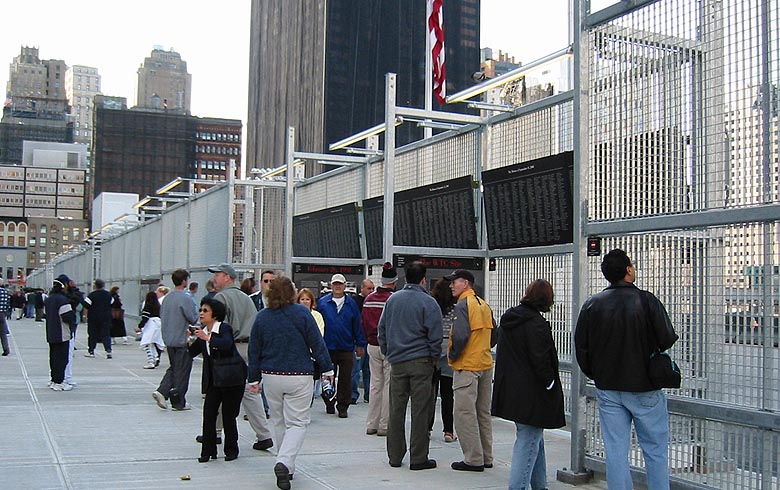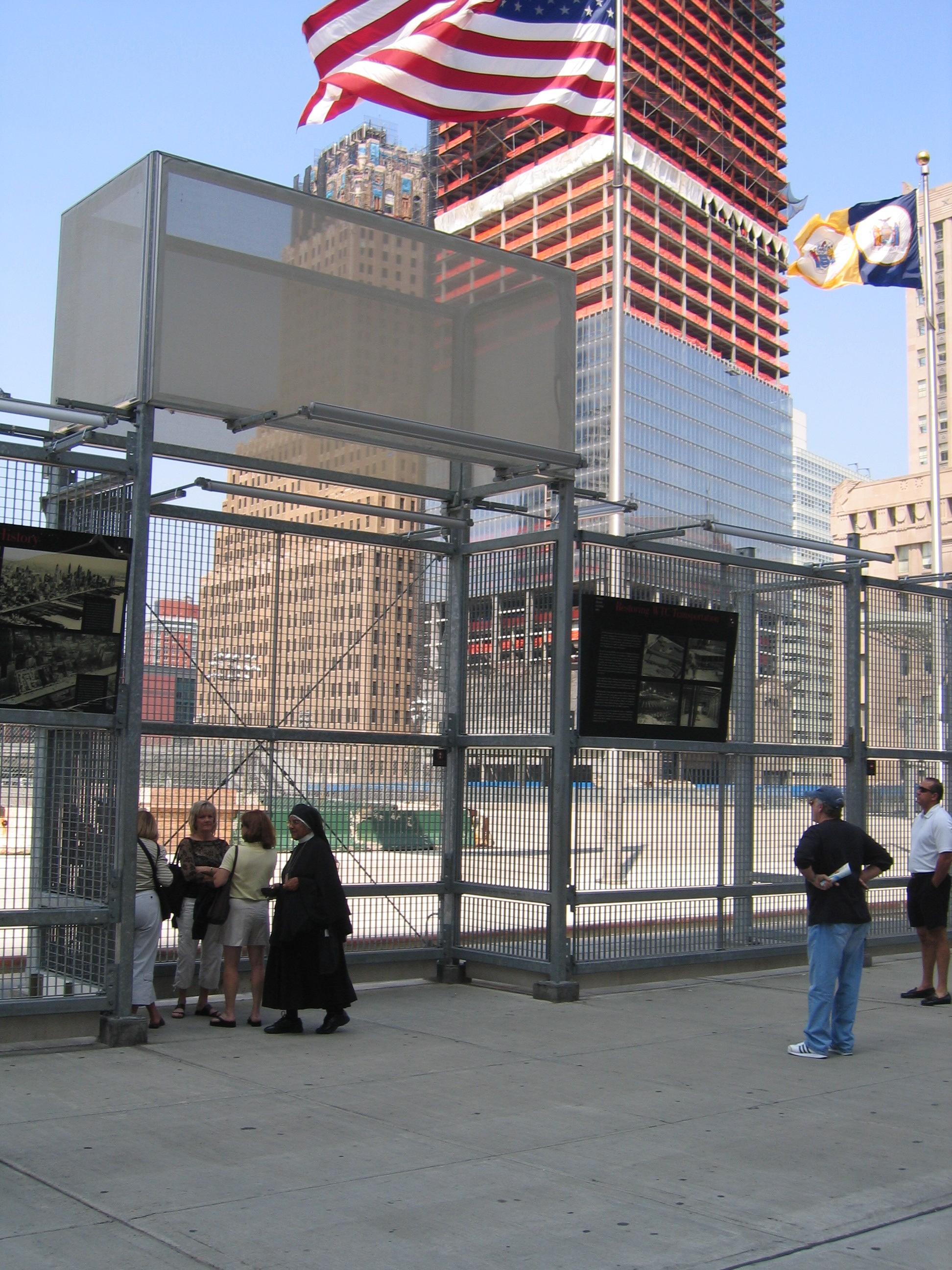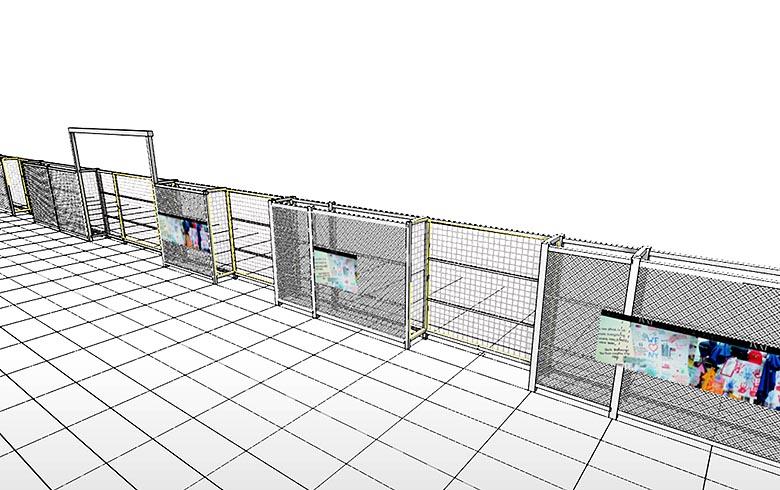2003 - New York, NY, USA
Ground Zero Viewing Wall
New York, NY, USA
CLIENT LMDC / STATUS Completed 2003 / DESIGN TEAM Balmori Associates, Pelli Clarke Pelli
Temporary memorials arose as a way for both city residents and visitors to respond immediately to the events of September 11th --areas for grieving sprang up on fences, traffic islands in downtown Manhattan and fire stations throughout the city. While the pairing of the terms ‘temporary’ and ‘memorial’ is seemingly contradictory, this juxtaposition adds a certain resolution that exists for a fixed period in time. Balmori Associate’s viewing wall for Ground Zero looks to those spontaneous, short-lived responses as a way to capture a specific moment of our grief.
Ground Zero’s perimeter enclosure was imminent, as the Port Authority announced plans for a 40-foot long fence around the site; as a response, Balmori Associates generated ideas for the enclosure, presenting them in model form at a meeting of the American Society of Landscape Architects at the Max Protetch gallery.
The proposal was sent to the Lower Manhattan Development Corporation (LMDC) and the Port Authority developed an alternate plan based on Balmori Associates’ design. New York New Visions, a committee of design professionals concerned with the rebuilding effort, further revised the proposal during a weekend charrette. The Port Authority then produced construction documents, modifying our suggestions but keeping our original idea of transparency and setbacks. The final viewing wall was 13 feet high with 5-foot setbacks where visitors were able to leave mementos to be collected on a regular basis.
The structure is also a sort of construction fence-a regular feature at every construction site in the city since John D. Rockefeller put one specifically designed for viewing the construction of Rockefeller Center in the 1930s- an acknowledgement of the public’s legitimate inclusion in urban development.
The name of the structure changed from “construction fence” to “perimeter enclosure” and then to “viewing wall” to reflect an awareness of its public role.




